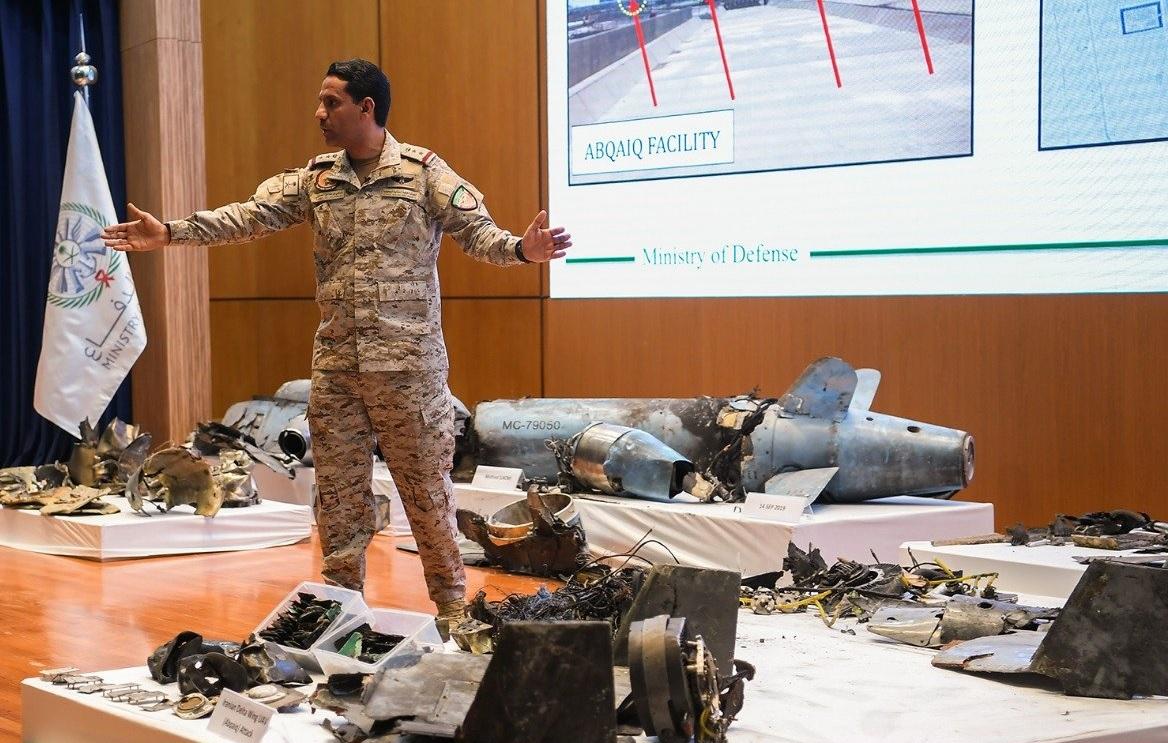
It is an enigma worthy of the genius of an Arthur Conan Doyle or an Agatha Christie. What is indisputable is that a ‘murder’ has been committed: Saudi oil installations in Abqaiq and Khurais have been attacked, possibly by a combination of drones and cruise missiles. As a consequence, more than half of the Saudi oil supply and 5% of the world’s oil supply has gone offline. However, who is responsible for the attack is still a mystery.
Although the Houthis of Yemen have claimed responsibility, serious doubts have been raised about this assertion. These include the sophistication of the weaponry employed and the direction from which the attacks originated. The attacks, according to US sources, seem to have originated from the west and north, which to them indicates Iranian culpability, and not the south where Yemen is located. Unnamed US officials have stated that the trajectory of the attack makes it clear it came from southwest Iran.
But independent observers with knowledge of weapons systems have disputed this analysis and argued that the drones and especially the cruise missiles used in the attack are sophisticated enough to change direction mid-flight and to re-route if faced with physical obstructions while proceeding to their targets. Moreover, it’s common knowledge that Iran has transferred drones and missiles to the Houthis that they have used against Saudi targets in the past.
US Secretary of State Mike Pompeo in his initial statement issued on Saturday clearly laid the blame on Iran. However, President Donald Trump, while implying that Iran was the culprit, has refused to directly name Tehran. In fact, Trump has been sending mixed messages. On the one hand, he has declared that the US is ‘locked and loaded’ to retaliate for the attack. On the other, he has stated that he would like to avoid war with Iran and would defer to the Saudis in making a decision about identifying the source of the attack.
On 18 September, the Saudi defence ministry declared that the attack was ‘unquestionably sponsored’ by Tehran and put on display the debris of drones and cruise missiles to demonstrate that they were of Iranian origin. A total of 25 drones and missiles were used in the strike launched from Iran not Yemen, ministry spokesman Colonel Turki al-Malki told a news conference. ‘The attack was launched from the north and unquestionably sponsored by Iran’, he said, adding that Iranian delta-wing unmanned aerial vehicles were used in addition to cruise missiles. But he went on to qualify his conclusion by saying that an investigation into where the attacks were launched from was still underway and the result would be announced at a later date.
Trump announced almost simultaneously that he had instructed his Treasury secretary to impose further sanctions on Iran. What those sanctions will include remains unspecified, but there’s not much left in Iran for the US to sanction. Trump’s announcement sounded like an attempt to find an alternative strategy that would make him look strong while avoiding entering into another conflagration in the Middle East a year before the elections, especially since his 2016 platform promised to bring the military back home from the volatile region.
Moreover, it seems unlikely that the government of Iran would have ordered such an attack at a time when signals were still being exchanged between Tehran and Washington about the possibility of a meeting between Trump and President Hassan Rouhani on the sidelines of the UN General Assembly session later this month. The prospect of such a meeting has since dimmed, and Trump says he’s not looking to meet Rouhani in New York. On their part, Rouhani and Iranian Supreme Leader Ayatollah Ali Khamenei, under pressure from hardline factions, have declared that no negotiations with the US will be held until Washington removes the sanctions reimposed by Trump.
Nonetheless, it doesn’t make strategic sense for the Iranian government to launch such an attack as long as there’s some hope of a deal with the United States. Prospects for such an eventuality had improved following Trump’s somewhat reconciliatory statements in Biarritz at the time of the G7 conclave, thanks to French President Emmanuel Macron’s efforts at mediating between Washington and Tehran.
The visit of Iranian Foreign Minister Javad Zarif to Biarritz, which coincided with the G7 meeting, had also raised hopes that moves towards an interim deal might succeed. With Iran’s daily exports of oil reduced from a million barrels, on which Iranian budgetary estimates were based, to a mere 100,000 barrels, no government in Tehran can overlook the consequences of an impending economic meltdown, and therefore the necessity for an eventual accord with the US.
There has been some speculation that Iran’s hardline Islamic Revolutionary Guard Corps, which has its own air force and opposes any reconciliation with the US, may have been behind the attacks. However, most experts believe that an operation of such magnitude, that could possibly entail war with the United States, couldn’t have been carried out from Iranian territory without the authorisation of the supreme leader. A US official has reportedly told CBS that this is indeed what happened and that Khamenei gave his authorisation on the condition that the attack be carried out in such a way that Iran could deny involvement.
Despite the Saudi claim that the attack came from Iranian territory, it’s imprudent at this stage to completely disregard the Houthis’ claim of responsibility for the incident. If their claim turns out to be correct, then it’s a strong signal to Riyadh that it must re-evaluate its policy on the conflict in Yemen or find itself at the receiving end of further attacks that could have significant negative consequences for the supply of oil from the Persian Gulf.